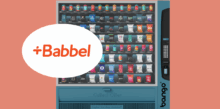Major trends from MIPCOM 2025: when the creators beached at Cannes
by Giles Tongue | 16 Oct 2025
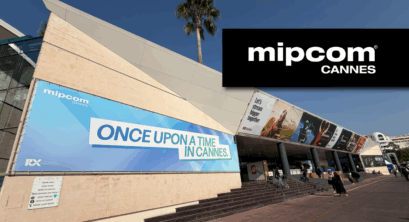
The overall theme of MIPCOM, is that “traditional” is a word for the history books, and there are new rules that are emerging out of the creator world. Invited to speak on stage were various creators, AI artists and even YouTube appeared at MIPCOM for the first time, no greater symbol of the creator economy walking up the red carpet and onto the main stage.
The event organizers clearly anticipating correctly a media and entertainment world at an inflection point, where the way we think, the way we are organizing things, the way we name and came to understand things, needs a redefinition.
And this is touching so many aspects of media and entertainment. Here are some of those inflection points, trends and interesting data I spotted at MIPCOM.
But first…
Why do we name things?
Humans name things because our brains are wired to turn chaos into order. From a neuroscience view, naming activates networks in the temporal and prefrontal cortices that handle categorization, prediction, and memory. Or to put that more simply – a label reduces cognitive load, it compresses a complex set of sensory and emotional data into a single, retrievable tag. Once something has a name, the brain can file it, reference it, and link it to past experiences. It becomes part of a mental map instead of an amorphous “unknown.”
Behavioral economics adds another layer: naming shapes how we value and relate to things. Framing effects show that once a concept has a label (“introvert,” “luxury,” “eco-friendly”), our decisions bend around that framing. We’re loss-averse even with abstractions: if a label disappears, the sense of predictability goes with it. Names make markets, tribes, and identities legible. They’re shortcuts for trust and belonging, but also blinders, because what we can’t name, we often don’t see.
“People don’t choose between things, they choose between descriptions of things”.
Daniel Kahneman, psychologist and author of “Thinking Fast and Slow”
The traditional redefined
Over and over again at MIPCOM, were examples of labels being ripped off and walls of what was once the “traditional” way of doing things, the “traditional” way of describing things, being challenged and redefined.
- YouTube and broadcast
This traditional redefinition was best exemplified by YouTube’s first-ever presence at MIPCOM. Evan Shapiro, media cartographer and leading voice on the convergence of media and the creator economy, hosted a panel including Pedro Pina of YouTube and BBC Studios’ Jasmine Dawson.
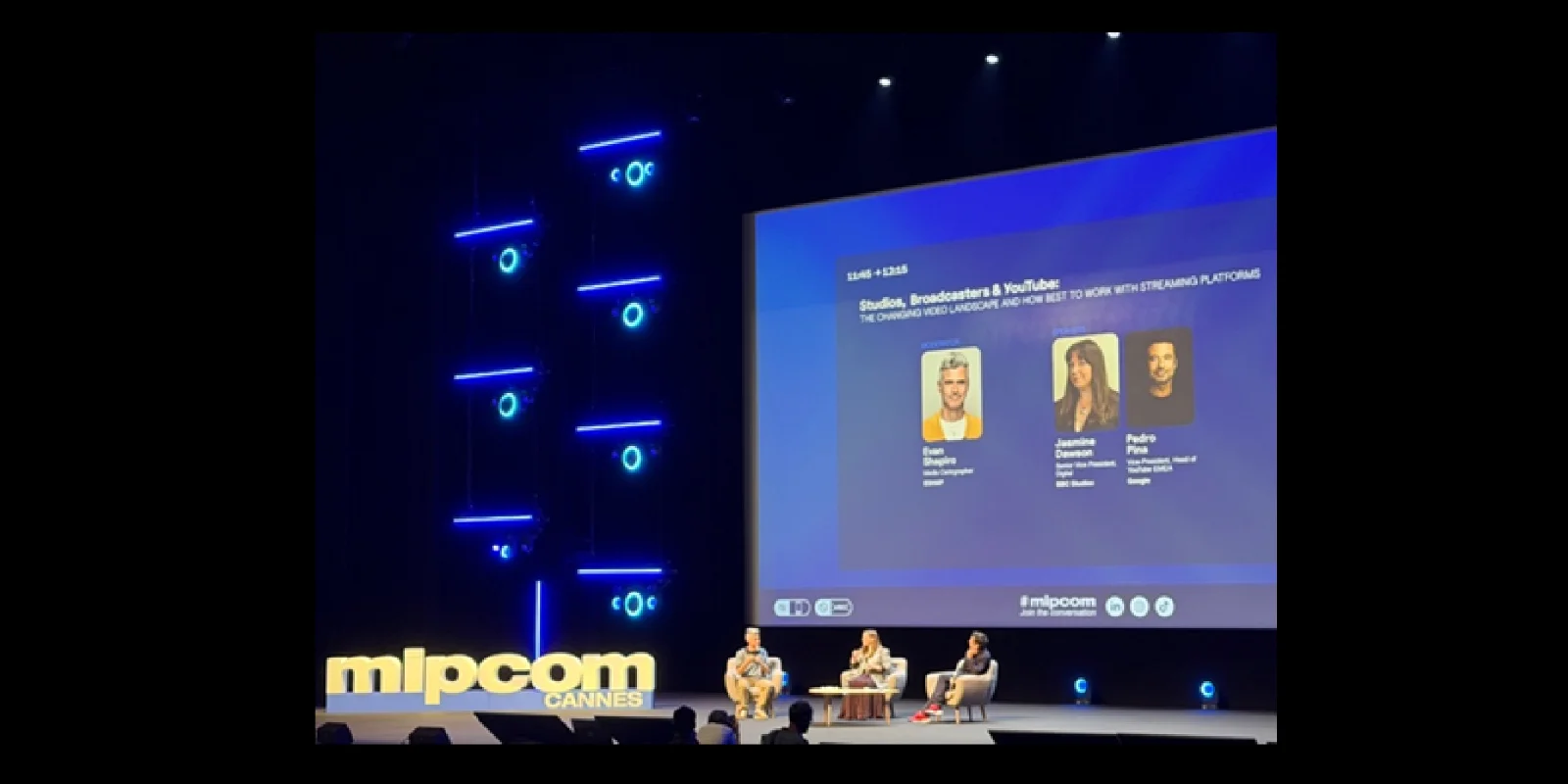
YouTube, the platform on which the creator economy has grown, is now also the home of content that originated from broadcast. The Shapiro hosted keynote was a case study of how BBC Studios has been able to reach additional audiences through YouTube, adding to their revenue.
There was once a fear that taking content to additional channels was somehow going to be damaging, diluting, a zero-sum game. Jasmine Dawson of BBC Studios has found incrementality, opportunity and new audiences though YouTube.
“We don’t sacrifice anything by using other channels to grow audiences and reach viewers”.
Jasmine Dawson, Senior Vice President, Digital at BBC Studios
A similar sentiment was shared at a Freely event, where Karla Berry, Head of Distribution & Partnerships, at Channel 4 shared that “Over half of young audiences are watching Channel 4 via streaming” as opposed to linear broadcast.
In the session “The Global Viewer Journey: From SVOD to YouTube and Back Again”, Matt Ross from Digital I, shared that in first half of 2025, streamers and broadcasters have channels reaching huge audiences through YouTube channels: Netflix (68.9m), ESPN (59.5m) and Saturday Night Live (57.8m). In a deep dive on the BBC in Q4 2024, it reached 13.7m through 15 channels (BBC, BBC News, BBC Music being the largest).
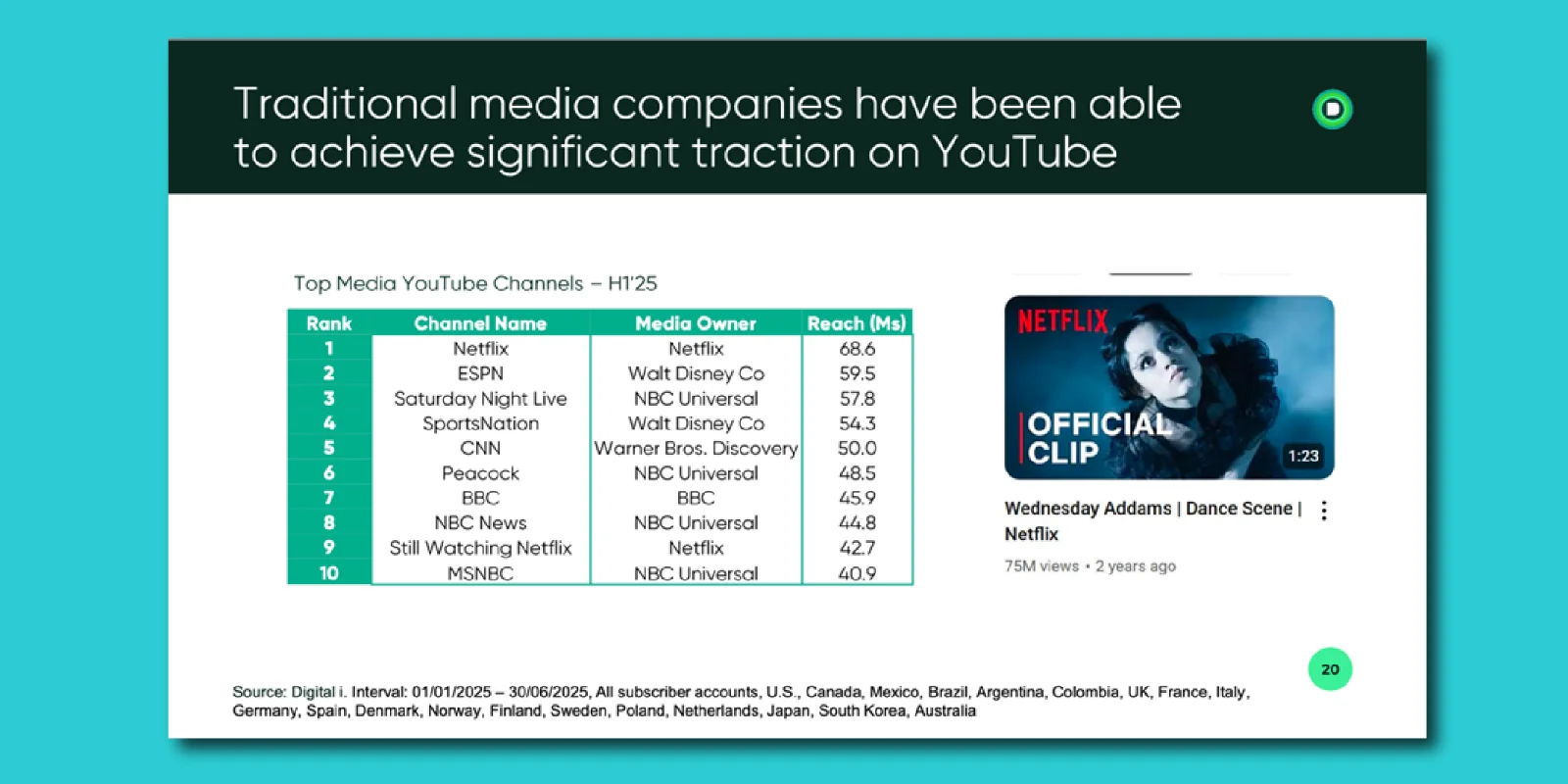
Creators continue to push the boundaries
- Think like a creator
In a wonderful session hosted by Shira Lazar, the team from After Party Studios, Ben Doyle and Callum McGinley, explained first hand, that the typical content creator is master of many skills – a storyteller, production, marketing, performer – and know instinctively a few important rules of the game – iterate and leverage channels.
They are not constrained by old values of one format on one platform (or channel), quite the inverse: create a piece of content, and get it in front of the audience, where they are, how they want it. What this translates to is an energy for continuous improvement – to explore, push boundaries, iterate, optimize, experiment, which makes behaviorally a far more malleable approach to “content”, formats and where it appears (distribution).
An amazing case study was shared in the session “Reshaping Entertainment in a Creator-Led Future”. French creator (perhaps once called a YouTuber) Inoxtag started by creating gaming videos for Minecraft and Fortnite. He met with Webedia, a production house and talent manager agency, represented on stage by CEO Christian Bombrun. Inox explained he was introduced to Webedia and then came up with the idea of climbing Everest, a topic he describes as being important to his “community”.
Having pitched the idea, Webedia met the partners and sponsors who could make it happen, and in his words said: “Ok bro, let’s do this together.”
I know the rest of this story from Marion Ranchet’s Streaming Made Easier Live in September. As well as ongoing filming, a feature film was made, “Kaizen”, which was watched in the cinema by 400k people across France, Belgium, Canada. 12m on YouTube at launch (46m views today). The 2.5 hours documentary was created and released first on TF1, and then a Disney+ worldwide release.
Joining via video link from LA, Spanish content creator Nil Odeja explain his approach to creation has been to “Be loyal to myself and follow my curiosity” – an approach which has taken him to meet Tim Cook, MrBeast and breaking news today, LeBron James.
Video: “Ok bro, let’s do this together.” – Kaizen, a film imagined and created by Inoxtag
There was an amazing data point shared by Steve Crombie of Totem during Evan Shapiro’s “Broadcasting to Next Generation Audiences via YouTube”, showing how basketball creator outperform the NBA on YouTube.
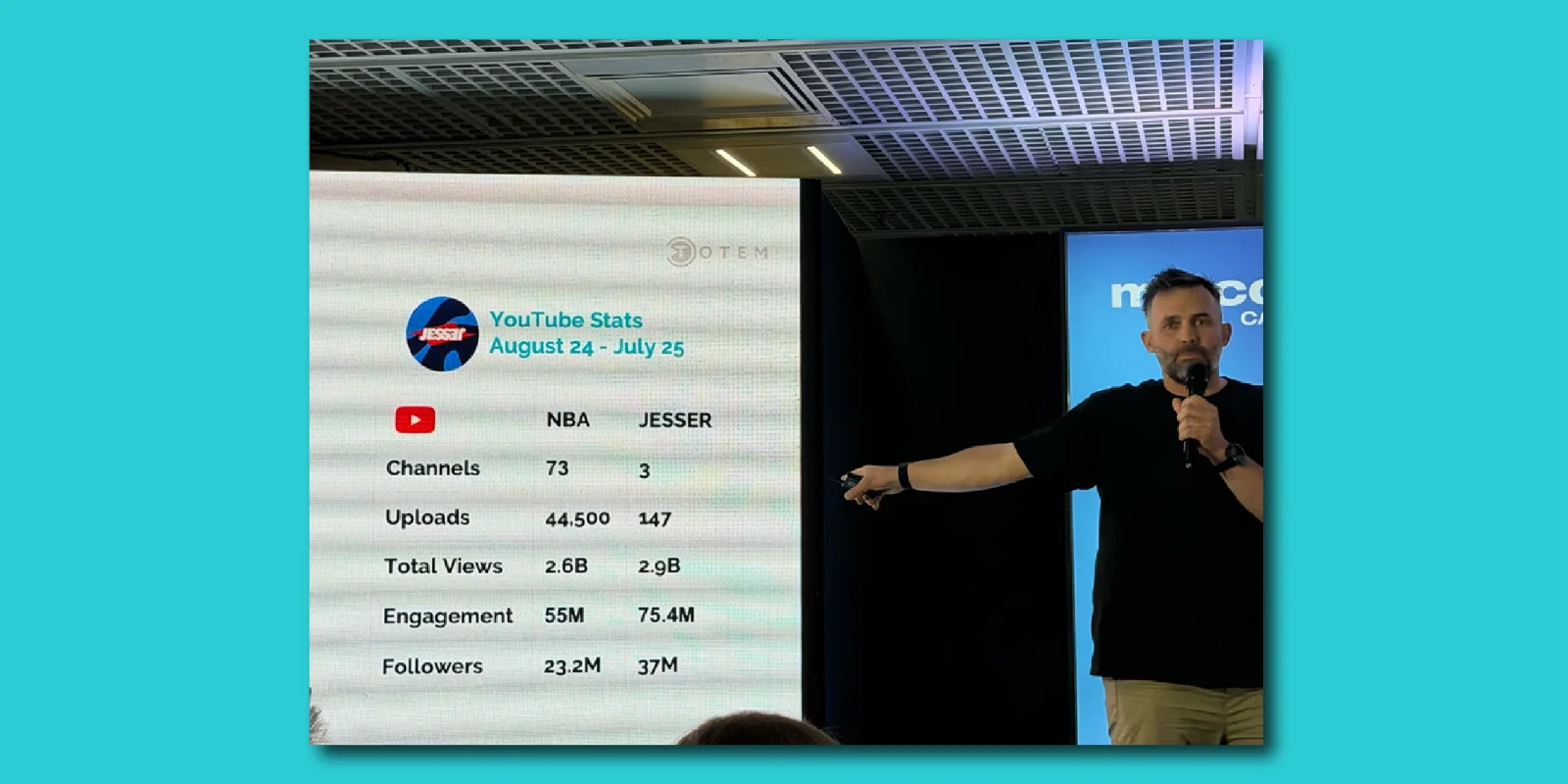
- A new lexicon from the creators
When you listen to creators – they sound different. So, when thinking like a creator, behaving like a creator also apparently includes its own lexicon, where I learnt about “shiny floor TV”, those that are somewhat clinical in production, produced in a TV studio.
As the walls fall between platforms and formats, we lose words like “traditional” and even “creator” is heading for retirement. “YouTube” wasn’t in use, “Digital creator” and “digitally-native creator” were more forward thinking, so even “creator” is old news.
- Creator becomes production
The story of Dhar Mann Studios is fascinating – a content creator turned production house, which now has 125,000 square foot of studios, 9 production teams, creating 5.5 hours of content a week, which is then repurposed for different audiences – 18-21 year olds on YouTube, 21-44 year olds on Facebook – as well as teams focused podcast and other formats and platforms.
- Platforms coming to the creator
In a talk by Kudzi Chikumbu of Tubi, he explained their Creatorverse, where Tubi have curated a space for select “content creators” such as MrBeast to host their content (an August press release shows 5 creators, with 5,000 episodes at launch).
Initially this is an exercise in selectively utilizing the library and body of work already available from leading creators, but could in time move to co-funded exclusive content, specifically for Tubi. “Let the creator be the creator” and Tubi as the platform will enable audiences, fandoms to engage in content they love, and fall down enjoyable rabbit holes.
Embracing the creators is a natural continuation of their AVOD (ad funded video on demand) offering that already attracts 100m monthly active users.
Samsung TV likewise participated in a panel “The Rise of Independent Creators on Streaming Platforms” – where the sentiment was the same.
- Creators coming to the platforms
In a session “The Global Trends Shaping Entertainment’s Future” Mark Hoebich highlighted a trend that’s really accelerated in the 2020s, creators have been commissioned to create full shows for streaming services. Not adaptations of library material, full intentional platform specific shows.
MrBeast, the worlds biggest creator with 439m subscribers on YouTube, another 119m on TikTok (source: Ecosphere, ESHAP) is perhaps the most high profile example, creating BeastGames for Amazon Prime Video, combining influences of Squid Game elimination with his own do-crazy-things-to-win-cash style, making a formidable show with all the production feel and frenzy of his YouTube formats but in the confines of something more like a TV Show.
Describing “YouTube-to-video” examples Luminate’s Mark Hoebich included Cocomelon and Blippi (Netflix) and The D’Amelio Show (Hulu).
Breaking down walls between advertising and entertainment
- Brand advertising and entertainment
Elsewhere, at the BrandStorytelling Summit in the session “Brand Entertainment – Why Now?” Cathy Boxall of Dentsu discussed the breaking down of walls between brand advertising and branded entertainment. Cathy described the Algorithmic Era in which because of behaviors and measurement of seconds, swipes, scrolls, it’s hard to tell a story or land a message in this way. Instead, branded entertainment, such as commissioned film and series, provide a longer form structure to tell the stories. Brand messaging through entertainment.
“Advertising and entrainment have collided”.
Janett Haas, SVP Forbes Research & Insights
- Branded entertainment as a revenue stream
Cathy Boxall went on to explain that high quality branded entertainment, such as films funded by brands to tell compelling stories, can also become a revenue stream. Described was a brand that created content with broadcaster, who went on to sell the content to other markets. Fascinating that content, created to tell a story and build a brand, could become a revenue stream.
- Toy brands become films
At the MATTEL Keynote by Chief Content Officer, Mattel Studios Robbie Brenner, she showed how Mattel, hot on the success of Barbie, which took a famous and much loved toy, into a film Barbie to huge success, is now being repeated for other IP they own. Mattel has over 200 strong independent brands, which they are now taking to film and TV, including Matchbox (cars), Barney and Fireman Sam.
- Games become films
Luminate’s Mark Hoebich shared the number of gaming IP that had been turned into films or series, going from 1 or 2 major releases in the 2010s, to as many as 10 per year in the 2020s, as well as a long list of films and tv series in development, such as Splinter Cell: Deathwatch (Netflix), Return to Silent Hill (Cineverse), Street Fighter (Paramount) and the Legend of Zelda (Sony).
The future
- A 2026 trend, unveiled in 2025
Maria Rue Aguete of Omdia took to the stage on day one. In a session called “Global Streaming Tends: Focus on CTV and FAST” – she took a surprise jump from the top diving board with a huge data dive: Micro-dramas are set to $11B in global revenues by 2025, double the side of FAST.
Given the amount of time and panel space given to FAST at this and other shows, expect Micro-dramas to be more prominent next year.
- And what of AI – here for our jobs?
There were many sessions, and indeed a showcase from Kling AI (Kling AI NextGen Creative Contest: Winner Showcase), which demonstrated the state of the art in AI. Some amazing “photoreal” imagery dare I say cinematography.
In the previously referenced Luminate presentation some titles already released using AI are Alien Romulus, Flash, Ghostbusters Afterlife and Rogue One.
Clearly a tool that is also coming as an enabler and most common talk at the show was using to automate or speed up workflows so far, driving up efficiency – which is how Dhar CEO Sean Atkins described their usage in the session MIPCOM CANNES Spotlight: The Creator Economy.
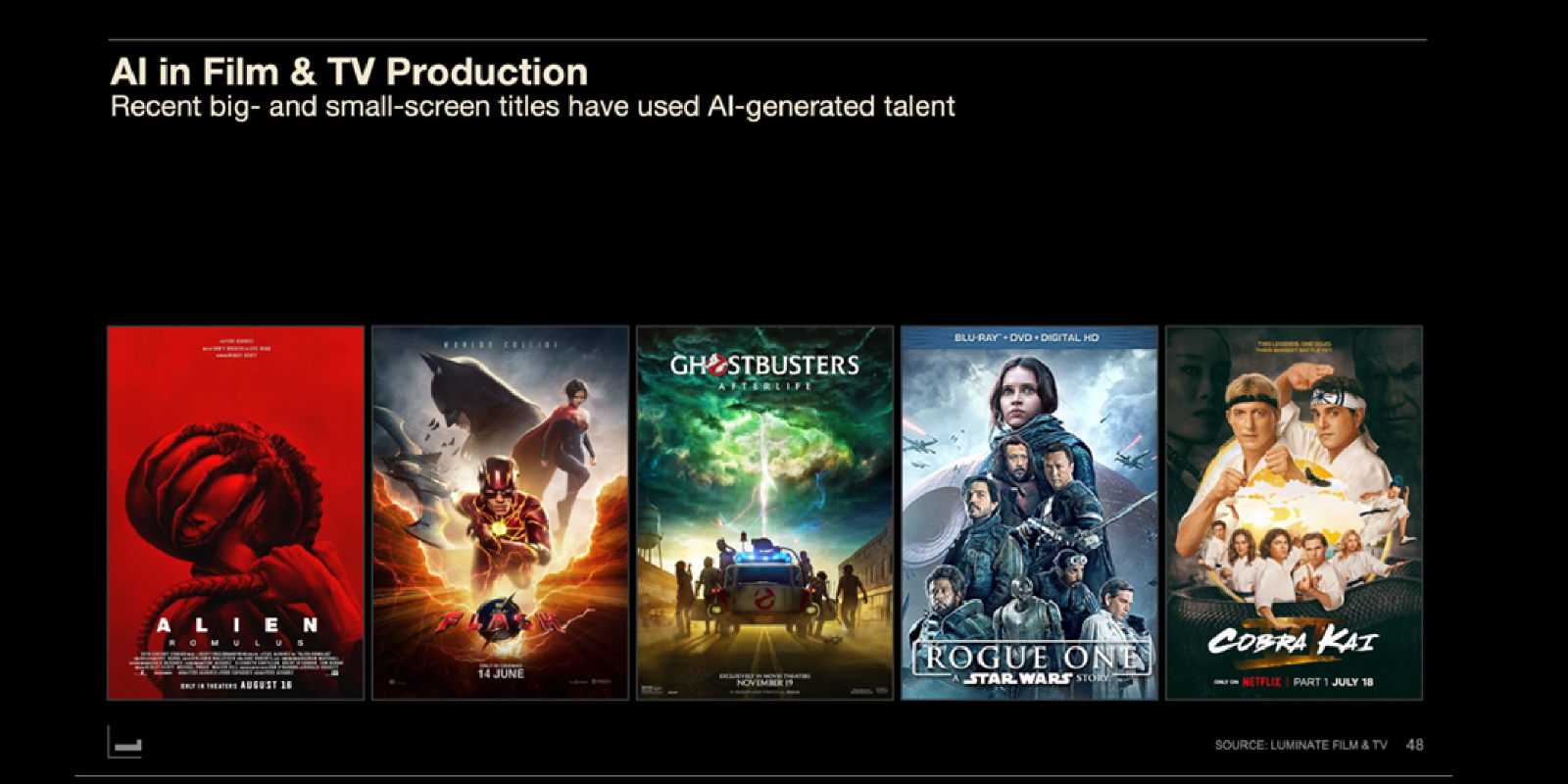
- Bundlers and bundlees
Role reversal was also in discussion for subscription brands. Subscription brands who typically want to bundled by mobile operators, PayTV, device manufactures, were asking if they could bundle other services themselves, and even be bundled by other services.
So, what does it all mean?
MIPCOM describes itself as the global market for content across all platforms. The inclusion of YouTube in this discussion is symbolic of the times, the breaking down of invisible walls, and the arrival of the creators. Like independent circles of fiefdoms where singular formats were for singular platforms, entertainment in whatever format on whatever platform, brands, toys, games, music, merchandize, creators, broadcast, linear, now begin to meld like a twisting kaleidoscope.
Where once the “traditional” world of media was described in terms of linear and broadcast, now the intersection of these worlds is inevitably coming together, bringing different ways of working, different perspectives and attitudes, protectionism versus opportunism.
A new world where story is key, where platform is just another distribution choice among many, where format is malleable and diverse.
Where the goal is simply to meet the audiences wherever they are, in the format they prefer, and with the flexibility where appropriate, to pay for it, in the most convenient way.
I’ll give the last word to Pedro Pina from YouTube:
“It is not a push era any more it is a pull era”.
Pedro Pina, Vice President at YouTube
Subscribe to our newsletter
Get the latest subscription bundling news and insights delivered straight to your inbox.


